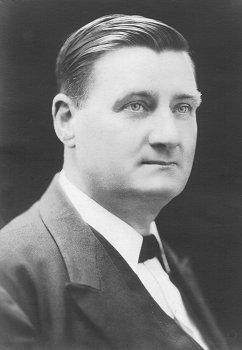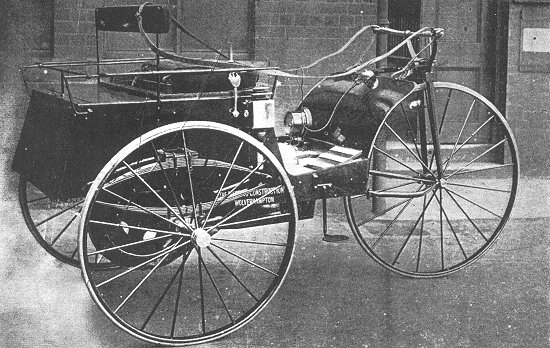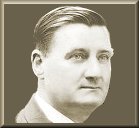| Thomas Parker's son, Thomas Hugh Parker, also had his
father's flare for design and innovation. From 1884 onwards
his father built a number of prototype motor cars and Thomas
Hugh followed in his father's footsteps. In 1901 he built a
steam powered car with a 10h.p. compound engine which burnt
oil. It performed extremely well. Some of Thomas Hugh's
cars included modern features such as hydraulic brakes on
all four wheels and four wheel steering. He also worked on
petrol powered vehicles and claimed to have invented the
spark plug, the monoblock engine and the carburettor. |

Thomas Hugh Parker. Courtesy of Gail
Tudor. |
The Sedan Automobile Syndicate Limited was founded in
1907 with a capital of £10,000 in £1 shares. The company was
based at 51 Lichfield Street, Wolverhampton and was founded
to acquire the Burnt Tree Engineering Works, Tipton and
their interest in two patents. The first, taken out by
Thomas Hugh Parker was for improvements in motor cars and
the second was for an invention by L. Wirtz for improvements
in variable and reversing gear.
The company produced a unique articulated car which was
partly or wholly designed by Thomas Hugh Parker. It is not
known how many of these cars were produced, but they were
likely built at the Tipton Works. |
| For a time, the Electric Construction Company toyed with
the idea of manufacturing vehicles and Thomas Hugh Parker
designed a number of prototype cars for the company.
Eventually the idea was dropped and no cars were ever
produced commercially by the company. Thomas is credited
with the design and manufacture of E.C.C.'s most famous car,
the 'electric dog cart'. |

The Electric Dog Cart. Courtesy of the
late Jim
Boulton. |
|

Another view of the dog cart. |
The 'dog cart' was built in 1896. Reins were used to
steer the vehicle because Mr. A. B. Blackburn, who was works
manager, enjoyed horse riding and so the vehicle had to be
as similar as possible to a horse-drawn one.
The operation of the motor controller was by sliding
seat.
|
| It was said by Walter "Wattie" Wall, who was an old
employee, who often drove the dog-cart, that the arrangement
worked quite well when the movement consisted of sliding the
seat backwards, but not so well when it was necessary to
pull it forward. This difficulty was overcome by screwing a
half egg shaped wooden block to the seat. It rested between
the driver's legs and provided the necessary lock between
him and the seat. The vehicle had an interesting career
including a drive through London, with the late Duke of Fife
as passenger. In 1896 the car was entered in a race for
self-propelled road vehicles, from the Crystal Palace,
London, to Birmingham.
This was organised by 'The Engineer' magazine, and there
was a 1,000 guinea prize for the winner. There were 72
entries, but on the day there were only five runners, and so
the race was cancelled. The car however, was highly
commended. The car was eventually broken-up at the works and
the motor was used for many years to drive an ash-hoist in
E.C.C.'s boiler house
The next section is an article from the March 1899 edition of the
"Automotor and Horseless Vehicle Journal". It's an excerpt from a paper
that was read before the Liverpool Self Propelled Traffic Association,
by Thomas Hugh, on 28th February, 1899. The article gives a
good insight into the early development of battery powered vehicles and
describes some of Thomas's early experiments. The final section is an
article from the Autocar magazine, of 7th December 1901. It
gives a detailed description of the Parker steam car, which was built
earlier that year.
|
|
 |
|

|
Return to
the list
of manufacturers |
|
Proceed to
Early Vehicles |
|